About a decade ago, as if I hadn’t had enough fun already, I decided to download a pregnancy app for my expectant wife, out of curiosity and perhaps to entertain her a little.
To my astonishment, that casual download evolved into hours of daily usage, illustrating the surprising depth and engagement that a well-designed pregnancy tracking app could offer.
From daily baby growth updates to personalized pregnancy articles, this application becomes your unexpected guide in the thrilling journey towards parenthood.
By the end of this blog, you will have absorbed everything you need to know to develop a pregnancy tracking app that captures the hearts and minds of expectant parents around the globe, just like that app did for my family.
Top Takeaways:
- Understand Your Users: Pregnant women and their partners are at the heart of your app. Understanding their needs, fears, and questions will drive the design and features of a pregnancy app that genuinely supports and engages them.
- Personalization is Key: Every pregnancy is unique, and so should be the app experience. Personalizing content, reminders, and even user interfaces can make your pregnancy app more relatable and valuable.
- Data Security Matters: Pregnancy is a sensitive time, and users entrust health apps with their personal health data. Ensuring top-notch data security and privacy measures are in place is not just good practice, but crucial for gaining user trust.
Table of Contents:
- Pregnancy Tracking Apps Market Overview
- Top Pregnancy Tracking Applications
- The Anatomy of a Successful Pregnancy Tracking App
- 5 Steps to Develop a Pregnancy Tracking App
- Pregnancy App Development Strategies
- Ensuring Data Security and Privacy in Pregnancy Applications
- Cost to Build a Pregnancy App
- Best Practices and Challenges
Pregnancy Tracking Apps Market Overview
The pregnancy app market is a vibrant ecosystem, teeming with a wide array of offerings. As of today, there are over 1,500 pregnancy-related apps in the App Store and Google Play combined. This number is continuously growing, as developers recognize that pregnancy tracking is not a niche market, but a universal need that crosses cultures and geographies.
In terms of downloads, the numbers are equally impressive. Pregnancy apps account for millions of downloads each year. Top applications like “What to Expect” and “BabyCenter” boast over 10 million downloads each, indicating a high level of engagement and reliance on these digital tools.
![]()
At least 10 percent of the top 100 applications in the Medical category on the App Store target expectant parents.
The trends tell a story of their own. There’s an increasing demand for apps that offer a holistic approach to pregnancy, going beyond basic tracking to include emotional wellness, nutritional expert advice, and virtual communities for expectant mothers. Furthermore, the incorporation of cutting-edge technologies like AI and machine learning or IoT is also on the rise, aiming to provide personalized predictions and insights.
In a nutshell, the pregnancy tracker app development market is booming and shows no signs of slowing down. This is a golden opportunity for entrepreneurs looking to make a meaningful impact on the lives of expectant parents.
Top Pregnancy Tracking Applications
Now, let’s dive into some of the top pregnancy tracking applications that are leading the pack.
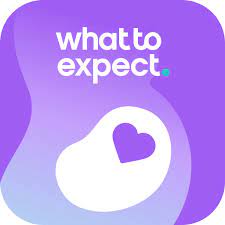
What to Expect
Description: As the digital counterpart to the iconic pregnancy book, “What to Expect When You’re Expecting,” this pregnancy timeline app has made a mark in the pregnancy app market. It offers daily updates, week-by-week illustrations, helpful daily articles, and a vibrant community of parents-to-be. With a personalized approach and user-friendly interface, it’s a favorite among expectant parents.
Years on the market: 10+
Monthly downloads: 200,000+
Monetization: free, ads
Years on the market: 8+
Supported Platforms: iOS (iPhone/iPad/Apple Watch), Android
App Store/Google Play rating: 4.9 • 322K reviews / 4.8 • 104K reviews
What’s great about it:
- High-quality, personalized content
- Easy-to-use interface
- Engaging community of users
Related: Healthcare App Development

Ovia Pregnancy
Description: Ovia Pregnancy Tracker is a comprehensive app that offers personalized tracking of pregnancy milestones, health and wellness tips, community support, and even a baby name finder. It also has a built-in contraction timer and kick counter for expectant mothers to monitor their baby’s movements and watch baby development.
Years on the market: 6+
Monthly downloads: 100,000+
Monetization: free, ads
Supported Platforms: iOS, Android
App Store/Google Play rating: 4.9 • 91K reviews / 4.7 • 144K reviews
What’s great about it:
- Extensive tracking features
- High-quality illustrations and videos
- Personalized content and community support
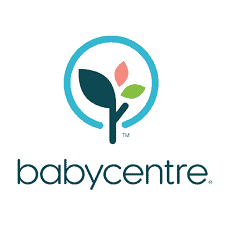
BabyCenter
Description: BabyCenter is a popular pregnancy app that offers daily updates, helpful articles, and personalized content based on the user’s due date. It also includes a contraction timer, kick counter, and a baby name finder.
Years on the market: 10+
Monthly downloads: 100,000+
Monetization: free, ads (note that none of these applications employ subscription models or incorporate in-app purchases).
Supported Platforms: iOS (iPhone/iPad/Mac), Android
App Store/Google Play rating: 4.9 • 213K reviews / 4.9 • 1.42M reviews
What’s great about it:
- Well-designed interface
- Trusted source of information
- Engaging community of users
In summary, these three applications have set the bar high in the pregnancy app market. Their success in pregnancy tracking app development is rooted in a personalized approach that provides high-quality, tailored content, a user-friendly interface, and a supportive, interactive community.
As we move forward, we’ll delve deeper into the anatomy of a successful pregnancy tracking app, helping you grasp the key elements required to create an application that stands out in this crowded market.
The Anatomy of a Successful Pregnancy Tracking App
A successful pregnancy tracking application tends to weave together a rich tapestry of features, delivering a comprehensive experience that caters to every facet of the healthy pregnancy journey.
![]()
User Experience and Interface Design
The first step towards creating an outstanding pregnancy tracking app is to prioritize user experience and interface design. Pregnancy is a unique journey, with varying emotions and physical changes at different stages. Your product should reflect this by offering a personalized, engaging experience that resonates with expectant parents.
Here are some key features to consider:
- Personalized onboarding process – asking for basic information about the user’s pregnancy, such as due date or week of pregnancy
- Clean and intuitive interface – easy to navigate with clear sections for tracking, articles, community, etc.
- Engaging visuals – high-quality illustrations and/or videos that depict the different stages of pregnancy
Tracking Features
At its core, pregnancy tracking mobile app development should encompass features that enable expectant parents to monitor their progress and keep track of important milestones. Here are some essential tracking features to consider including (tracking app like Ovia is a good example):
- Baby size tracker – showing the baby’s size in relation to fruits or objects
- Kick counter – allowing mothers to monitor their baby’s movements and ensure they’re within a healthy range
- Contraction timer – for monitoring contractions during labor
- Weight and symptom tracker – tracking changes in weight and common pregnancy symptoms like morning sickness or fatigue
Personalized Content
Personalization is key in the success of a pregnancy tracking app. Each expectant parent’s journey is unique, and your application should reflect that by offering personalized content based on their due date or week of pregnancy.
Some examples of personalized content to include are:
- Daily/weekly updates – providing information on the baby’s development, the mother’s body changes, and helpful tips
- Articles – covering a wide range of topics such as nutrition, exercise, labor and delivery, etc.
- Community support – connecting users with other expectant parents for advice and support
Integration of Cutting-edge Technologies
As technology continues to advance, there are endless possibilities for integrating innovative features into pregnancy tracking apps. Some examples include:
- Virtual reality experiences – allowing expectant parents to experience their baby’s development in a more immersive way
- Augmented reality – giving users the ability to see what their baby looks like at different stages of development
- Wearable devices – syncing with popular fitness trackers or smartwatches to provide more accurate tracking data
By incorporating cutting-edge technologies, you can create a unique and memorable experience for your app users.
When it comes to must-have features, there’s no definitive list that applies to every pregnancy solution. The beauty of application development lies in the power of choice, empowering you to select which features resonate most with your target audience and align best with your brand vision.
This flexibility allows you to tailor your application to meet the specific needs and expectations of your users, thereby creating a unique and personalized experience.
5 Steps to Develop a Pregnancy Tracking App
Embarking on the journey to build a pregnancy tracker app presents an exciting opportunity to make a meaningful impact on the lives of expectant parents, providing them with a comprehensive tool to navigate this unique phase of a woman’s life with confidence and ease.
Before delving into our approach, let’s pause and explore the conventional process of software development. By doing so, we can then make a meaningful comparison and shed light on our unique approach.
Standard App Development Process
The standard app development process often starts with defining the project requirements, followed by designing the application’s interface, developing its functionality, testing for errors or bugs, and finally, launching the app to the public.
This is a linear approach that can be quite rigid, requiring the entire project’s scope and specifications to be defined upfront. This method can limit the room for changes and adjustments as the project progresses.And achieving the perfect product-market fit right off the bat is far from guaranteed.
Topflight’s Flexible and Iterative Approach
At Topflight, we leverage an agile development process that places the user at the center of the app design and development process. Rather than working from a fixed set of requirements, we begin with a clear understanding of the user’s needs, goals, and preferences. Our approach allows for continual iteration and improvement throughout the app development cycle, whether we create a pregnancy tracking app or build a women health tracking app.
This means we can more effectively respond to changes, whether they’re shifts in the market, user feedback, or new insights about the user experience.
Here’s how our process works:
- Discovery Phase: We start by understanding the user’s needs and the market demand. This phase often includes market research, user interviews, and competitive analysis.
- Design Phase: Next, we design the app’s user interface and user experience (UX/UI), focusing on usability and accessibility. Our design team works closely with our development team to ensure the designs are technically feasible.
- Development Phase: Our development team builds the application’s functionality, working in sprints to ensure continual progress and improvement.
- Testing Phase: We conduct rigorous testing, both manually and using automated testing tools, to ensure the product is free from errors and provides a smooth user experience.
- Release Phase: Once we’re satisfied with the app’s performance, we proceed with the launch. But our work doesn’t end here. We continue to monitor the app’s performance and gather user feedback for future iterations.
One thing you need to keep in mind is we move through these steps while working on:
- an interactive prototype
- developing a proof of concept
- developing an MVP
- iterating on a product further
This flexible, user-centered approach, combined with our healthcare app development services, allows us to build top-quality, customized pregnancy tracking apps that truly resonate with users. At Topflight, we don’t just develop software; we create experiences that empower and support expectant parents on their pregnancy journey.
Pregnancy App Development Strategies
When it comes to developing pregnancy apps, there’s no one-size-fits-all strategy. Companies often diverge in their approach, with some opting for a comprehensive, all-in-one application while others follow a ‘divide-and-conquer’ strategy, creating separate apps for various pregnancy stages.
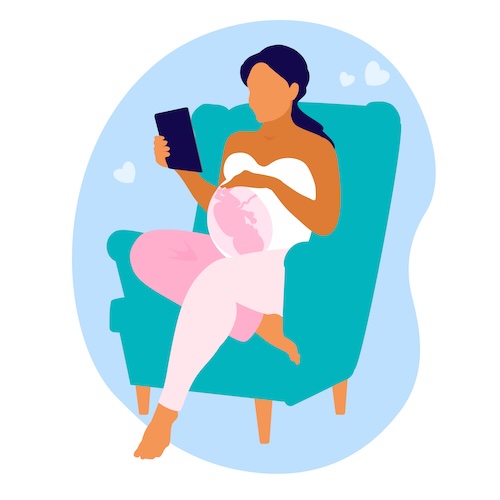
The All-in-One Approach vs. The Divide-and-Conquer Strategy
The all-in-one approach aims to provide a complete package, integrating every possible feature into a single application. This method caters to a broad range of user needs, from tracking fertility and pregnancy to postnatal care. It offers a seamless user experience, with no need to switch between different apps. However, incorporating a myriad of features can sometimes make the app complex, potentially leading to a cluttered interface and overwhelming the users.
On the other hand, some businesses, like Ovia, choose to separate their offerings into distinct apps, each focusing on a different stage:
- prenatal (e.g., prenatal appointments)
- pregnancy
- post-natal
This divide-and-conquer strategy allows each app to cater to the specific needs and situations of its target users, ensuring a streamlined, targeted user experience. It can simplify the design process and make each app more manageable and intuitive. However, users may find it inconvenient to download and switch between multiple apps as they progress through different stages.
Also Read: Femtech app development guide
Both strategies have their pros and cons when it comes to building a pregnancy tracking app. Selecting the right approach often depends on understanding your target users, their needs, and preferences. Whichever path you choose, the key is to deliver a user-friendly, engaging, and valuable experience that supports expectant parents throughout their journey.
Choosing the Right Path: In-app Features vs. Integrations
When starting a pregnancy app development project, one of the crucial decisions you need to make revolves around the app’s feature set. Should you aim to include every conceivable feature within your app, or should you instead opt for strategic integrations with existing services, other apps, and health APIs?
The Comprehensive Approach: Building In-house Features
The first approach involves developing a comprehensive suite of features within your app. From fertility tracking and mood monitoring to pregnancy tips and postnatal care medical advice, your app becomes a one-stop-shop for everything related to pregnancy.
Pros: uninterrupted, cohesive user experience; faster development.
Cons: requires more in-depth development and potentially a higher up-front investment.
The Strategic Approach: Leveraging Integrations
The second approach takes advantage of the wealth of existing services and health APIs out there. Instead of replicating features that other apps or services already offer, you can integrate these services into your app. For instance, if a user is already tracking their mood using Apple’s Health app, you can pull data from there, rather than building a separate mood tracking feature in your app. This approach can save development time and resources while you make a pregnancy tracking app, and it can also enhance the user experience by allowing users to continue using the services they’re familiar with.
Pros: cost-effective, faster development; enhances user experience.
Cons: may require additional effort to ensure seamless integration with external services; dependancy on third-party services.
Striking the Right Balance: A Hybrid Approach
A third approach, and arguably the most user-centric one, is a hybrid approach. Here, you offer users the choice: they can opt to use your in-app features, or they can sync their data from other services. This way, users who prefer an all-in-one experience can have it, while those who have a preference for certain external services can stick with what they’re comfortable with.
The direction you choose will depend on your business goals, your understanding of your target users, and the resources at your disposal. At Topflight, we can guide you through these decisions, leveraging our expertise in health and wellness app development to ensure that your pregnancy app aligns with your business objectives and your users’ needs.
Ensuring Data Security and Privacy in Pregnancy Applications
In the context of pregnancy apps, ensuring data security and privacy is not just a responsibility; it’s a legal requirement. The Health Insurance Portability and Accountability Act (HIPAA), for instance, mandates the protection of sensitive patient health information. Non-compliance can lead to severe penalties, reputational damage, and loss of user trust. Data breaches, like the one experienced by Ovia, underscore the importance of robust data security measures and privacy policies.
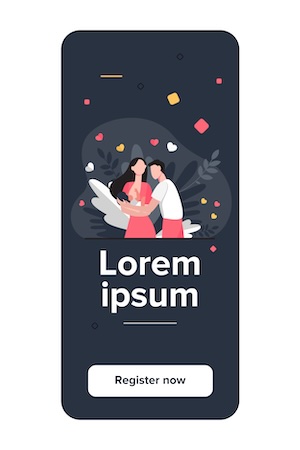
Moreover, there are growing concerns over the sale of health data to advertisers, which can lead to intrusive targeted ads. This is an alarming trend, given the deeply personal nature of the information users entrust to these applications. To address these concerns while creating a pregnancy tracker app, consider the following best practices.:
- Implement end-to-end encryption: This ensures that data is unreadable to anyone except the intended recipient.
- Conduct regular security audits: Regular audits can help identify vulnerabilities and rectify them before they can be exploited.
- Be transparent: Make your privacy policy clear and accessible, outlining exactly what data is collected, how it’s used, and who has access to it.
- Allow user control: Give users the ability to manage their data, including options to delete their account and all associated data.
In 2019, pregnancy tracking app Ovia found itself in hot water due to privacy concerns. The Wall Street Journal reported that employers who pay for access to Ovia’s “family benefits solution” could access aggregated, anonymized data about their employees’ health, posing potential privacy issues.
This incident serves as a cautionary tale for other health and wellness app development companies. Users of these apps want assurance that their sensitive health data is secure and private. It’s crucial to ensure that your software has robust data security measures in place and that you’re transparent with users about how their data is being used, stored, and shared.
Related: HIPAA Compliant App Development Guide
Cost to Build a Pregnancy App
As with any app development project, the cost of building a pregnancy app can vary significantly depending on various factors. These include:
- App features and complexity: The more comprehensive your feature set, the higher the development cost will be.
- Platforms and devices: Developing for both iOS and Android? Expect higher costs.
- Development team rates: Rates can vary depending on experience levels, location, and other factors.
- Integrations: If you opt for integrations with external services, this can add to your development costs.
Related: App Development Costs: The Complete Breakdown
While there’s no one-size-fits-all answer when it comes to the cost of pregnancy app development, a rough estimate would be anywhere between $80,000 and $150,000. However, keep in mind that this is not a definitive figure and can vary significantly depending on your specific requirements.
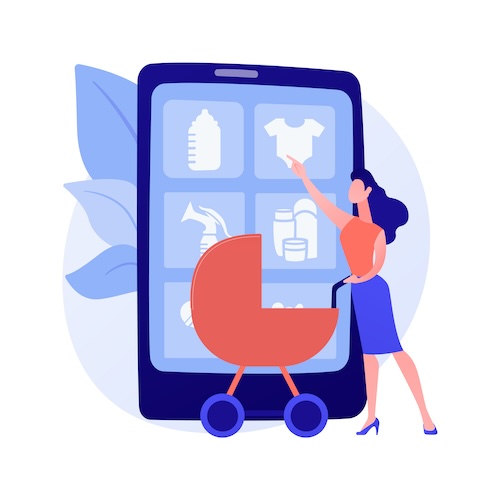
At Topflight, we offer custom app development solutions tailored to your unique business objectives. Our team of experienced developers, designers, and project managers work closely with you every step of the way to ensure that your pregnancy app meets your expectations while staying within your budget. From feature ideation and design to development and launch, we have the expertise to bring your pregnancy app vision to life.
What truly counts: As we progress, our aim is to bring you closer to achieving traction, whether that entails adopting a no-code approach or building a native app that seamlessly integrates with legacy systems. Our methodology revolves around delivering maximum value during each iteration, gradually moving the app towards an optimal product-market fit.
Please read our post about the cost to develop a healthcare app for more info.
Best Practices and Challenges
Pregnancy tracking application development requires recognizing and navigating through a series of challenges while adhering to best practices for a successful app.
IoT Integrations
As part of your app’s feature set, consider the integration of Internet of Things (IoT) technologies. For instance, devices that can be affixed to a belly for contraction tracking and monitoring fetal movements, or even heart rate can provide a real-time valuable, interactive resource for expectant mothers. However, seamless integration that ensures accuracy and reliability can pose a significant challenge.
Multiplatform Availability
Ensuring your application is available across multiple platforms can significantly broaden your user base. Remember, not all users will access your app on their smartphones. Providing iPad compatibility or smartwatch integrations can enhance user experience and convenience. However, maintaining consistent functionality and user experience across all platforms can be a significant technical challenge.
User Engagement
Encouraging users to return to your app regularly is key to its success. While learning about the baby’s development can be exciting, it can also lose novelty over time. To combat this, consider incorporating varied features such as daily tips, interactive 3D models, and community forums or other social media integrations. However, creating engaging and diverse content that appeals to a wide range of users will require creativity and an in-depth understanding of your target demographic.
![]()
Dealing with User Feedback
During pregnancy, emotions can run high, leading to a higher likelihood of negative feedback. Implementing a robust feedback system to guide negative comments to customer support and positive ones to mobile app stores can help manage this. Yet, the challenge remains to address the feedback constructively and to improve the app continuously based on user suggestions.
Personalized Content
In the realm of pregnancy apps, personalization is key. Users expect content tailored to their specific stage of pregnancy, health conditions, and personal preferences. This could include custom diet plans, personalized workout routines, or weekly updates on the baby’s development. However, creating such a high degree of personalization requires a deep understanding of the user’s journey and needs, which can be a challenge.
Integration with Telehealth
To provide a more holistic service, consider integrating your app with healthcare providers. This could allow users to schedule appointments, view medical records, or even consult with healthcare professionals directly through the app. However, such integrations involve navigating complex regulations and ensuring stringent data privacy, which can pose significant challenges.
Accessibility
Accessibility should be a priority when developing a pregnancy app. This means ensuring that your app is user-friendly for people with disabilities. Features could include voice commands, text-to-speech capabilities, or easy-to-read fonts for visually impaired users. It’s important, yet challenging, to balance these features with maintaining a clean, intuitive interface.
Community Building
Creating a sense of community within your app can greatly enhance user engagement. Consider incorporating features like forums for users to share experiences, ask questions, and support each other. The real challenge here is to build and maintain a positive, respectful community environment, which requires careful moderation and community management.
At Topflight, we have the expertise to address these challenges, delivering a user-focused, comprehensive pregnancy app that stands out in the market. We believe that understanding and integrating these best practices can significantly enhance the user experience and set your app apart from the competition.
Get in touch with us today to learn more about our services and discuss how we can help you start a pregnancy tracking app. Let’s create a top-flight pregnancy app together!
Frequently Asked Questions
Is it possible to include a feature for medical consultations in my pregnancy app?
Yes, absolutely. We can integrate telehealth services in your pregnancy app, which will allow users to schedule appointments, view medical records, or even consult with healthcare professionals directly through the app.
How can we ensure our app is accessible for all users?
We prioritize accessibility in our development process. This could involve implementing features such as voice commands, text-to-speech capabilities, or larger, easy-to-read fonts for visually impaired users. We strive to balance these features while maintaining a clean, intuitive interface.
Can you help us build a community with our app?
Absolutely. We understand the importance of community for user engagement. We can incorporate features like forums, where users can share experiences, ask questions, and support each other. Our challenge is to build and maintain a positive and respectful community environment, which we achieve through careful moderation and community management.